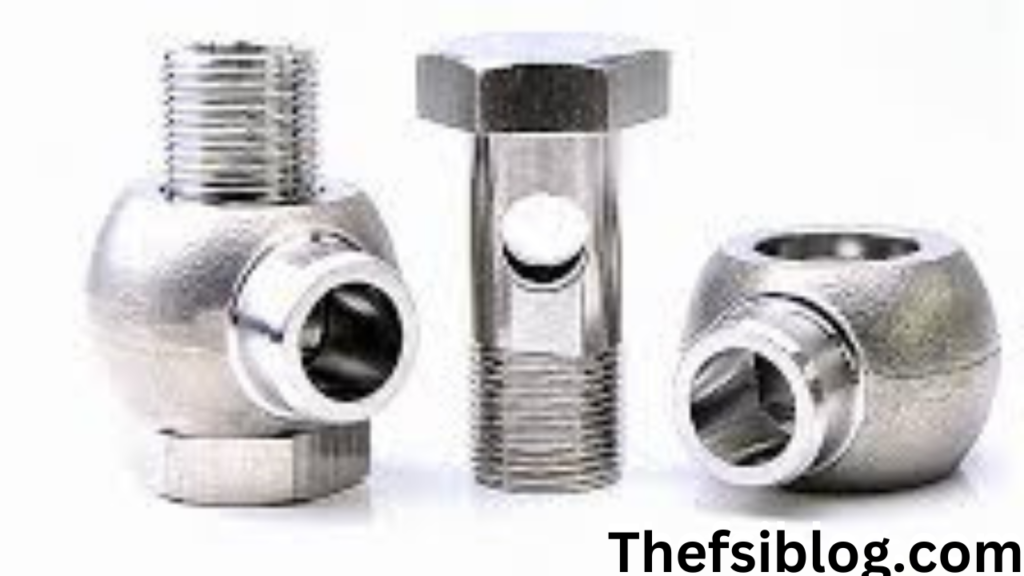introduction

Banjo fittings are essential components in a variety of hydraulic and fluid systems. These fittings are known for their unique design, which allows for secure and reliable connections in applications where space is limited. This comprehensive guide will delve into everything you need to know about banjo fittings, from their design and applications to their benefits and maintenance. By the end of this article, you’ll have a thorough understanding of banjo fittings and their role in various systems.
What Are Banjo Fittings?
Banjo fittings are specialized connectors used in hydraulic and fluid systems. They consist of a hollow bolt and a banjo-style fitting that provides a tight seal for fluid or gas transfer. The unique design of banjo fittings allows them to connect hoses and pipes at an angle, making them ideal for applications with limited space.
Design and Structure
Banjo fittings typically feature a flat, round flange with one or more ports through which fluid or gas can flow. The hollow bolt passes through the center of the flange and is secured with a washer or seal. This design ensures a secure connection and minimizes the risk of leaks.
Types of Banjo Fittings
Banjo fittings come in various types to suit different applications. The most common types include:
- Standard Banjo Fittings: These are the most basic type and are used in a wide range of applications. They typically feature a single port and are available in various sizes.
- Banjo Bolt Fittings: These fittings include a banjo bolt with a built-in flange. They are commonly used in automotive and aerospace applications.
- Banjo Adapter Fittings: These fittings are used to connect banjo fittings to other types of connectors. They are useful for transitioning between different types of fittings.
- Swivel Banjo Fittings: These fittings have a rotating component that allows for flexible positioning. They are ideal for applications where movement is required.
Applications of Banjo Fittings
Banjo fittings are used in a wide range of industries and applications. Some of the most common uses include:
- Automotive Industry: Banjo fittings are frequently used in automotive brake systems and fuel systems. Their ability to connect hoses at angles makes them ideal for tight spaces under the hood.
- Aerospace Industry: In aerospace applications, banjo fittings are used in hydraulic systems to connect various components and ensure reliable fluid transfer.
- Industrial Machinery: Banjo fittings are used in industrial machinery to connect hydraulic lines and ensure efficient operation of equipment.
- Marine Industry: In marine applications, banjo fittings are used in fuel systems and hydraulic systems to withstand harsh environmental conditions.
Benefits of Banjo Fittings
Banjo fittings offer several advantages that make them a popular choice in various applications. Some of the key benefits include:
- Space Efficiency: The compact design of banjo fittings allows them to be used in tight spaces where traditional fittings may not fit.
- Leak Prevention: The secure connection provided by banjo fittings minimizes the risk of leaks and ensures reliable fluid transfer.
- Versatility: Banjo fittings can be used in a wide range of applications and are available in various sizes and configurations.
- Durability: Made from high-quality materials, banjo fittings are designed to withstand harsh conditions and provide long-lasting performance.
How to Choose the Right Banjo Fitting
Selecting the right banjo fitting for your application is crucial for ensuring optimal performance and reliability. Here are some factors to consider when choosing a banjo fitting:
- Material: Banjo fittings are available in various materials, including aluminum, stainless steel, and brass. Choose a material that is compatible with the fluids or gases you will be using.
- Size: Ensure that the banjo fitting you select matches the size of the hoses or pipes you are connecting.
- Pressure Rating: Check the pressure rating of the banjo fitting to ensure it can handle the pressures of your system.
- Thread Type: Banjo fittings come with different thread types, so make sure to choose one that matches your system’s requirements.
Installation and Maintenance of Banjo Fittings
Proper installation and maintenance are essential for ensuring the longevity and performance of banjo fittings. Here are some tips for installation and maintenance:
Installation Tips
- Clean the Surface: Before installing the banjo fitting, ensure that the surface is clean and free of debris.
- Use Proper Torque: Tighten the banjo fitting to the recommended torque specifications to prevent leaks and ensure a secure connection.
- Check for Leaks: After installation, check for any signs of leaks and address them promptly.
Maintenance Tips
- Regular Inspections: Periodically inspect banjo fittings for signs of wear or damage and replace them as needed.
- Clean Regularly: Keep banjo fittings clean and free of debris to maintain optimal performance.
- Monitor Pressure: Ensure that the pressure levels in your system are within the specified range for the banjo fitting.
FAQs About Banjo Fittings
What is a banjo fitting used for?
A banjo fitting is used to connect hoses and pipes in hydraulic and fluid systems, providing a secure and reliable connection in tight spaces.
How do banjo fittings work?
Banjo fittings work by using a hollow bolt and a banjo-style flange to create a tight seal for fluid or gas transfer. The design allows for connections at angles, making them ideal for compact spaces.
What materials are banjo fittings made from?
Banjo fittings can be made from various materials, including aluminum, stainless steel, and brass. The choice of material depends on the specific application and the fluids or gases being used.
How do I choose the right banjo fitting?
To choose the right banjo fitting, consider factors such as material, size, pressure rating, and thread type. Ensure that the fitting matches the requirements of your system.
How do I install a banjo fitting?
To install a banjo fitting, clean the surface, use proper torque specifications, and check for leaks after installation.
How often should I inspect banjo fittings?
Banjo fittings should be inspected regularly for signs of wear or damage. Replace them as needed to ensure optimal performance.
Conclusion
Banjo fittings are a crucial component in hydraulic and fluid systems, offering a reliable and space-efficient solution for connecting hoses and pipes. Their unique design and versatility make them ideal for various applications across different industries. By understanding the different types of banjo fittings, their benefits, and how to choose and maintain them, you can ensure the optimal performance of your systems.
Whether you’re working in the automotive, aerospace, industrial, or marine industry, banjo fittings provide a dependable connection that meets your needs. Remember to follow proper installation and maintenance practices to maximize the lifespan and performance of your banjo fittings.
You can see lates updates on: thefsiblog



